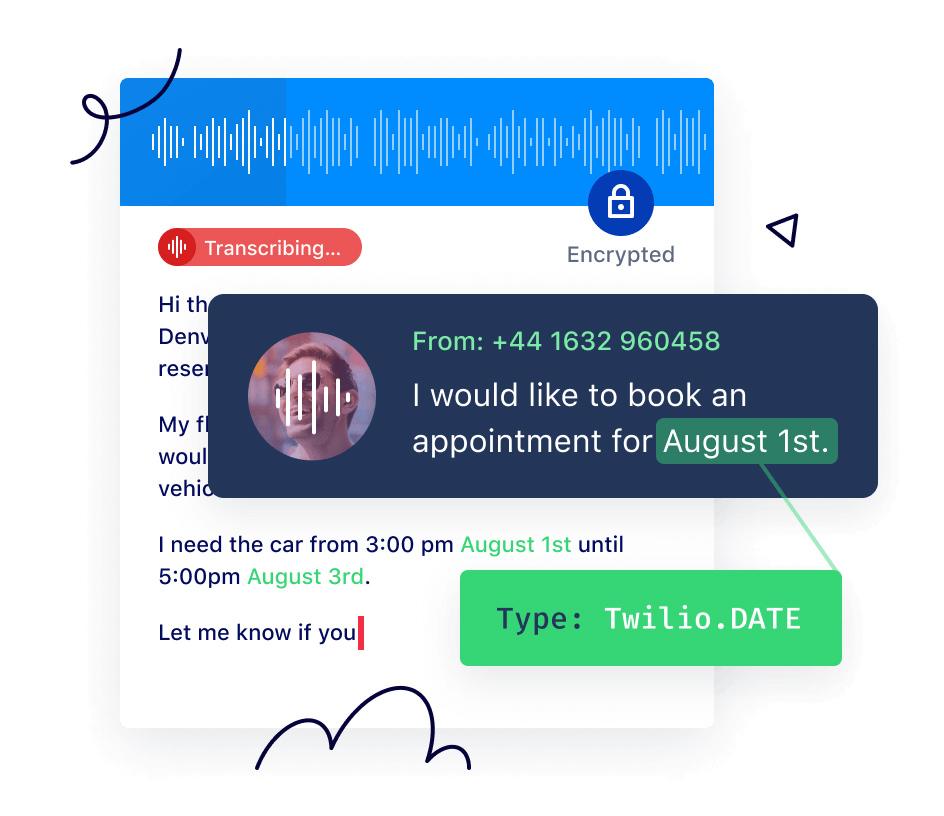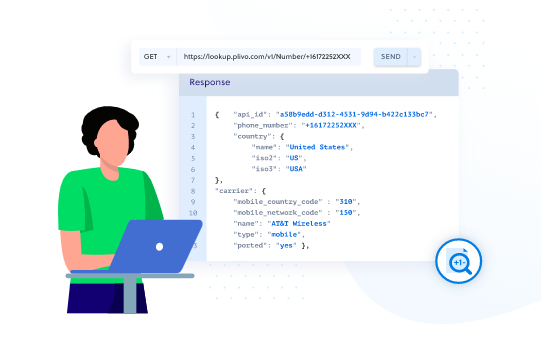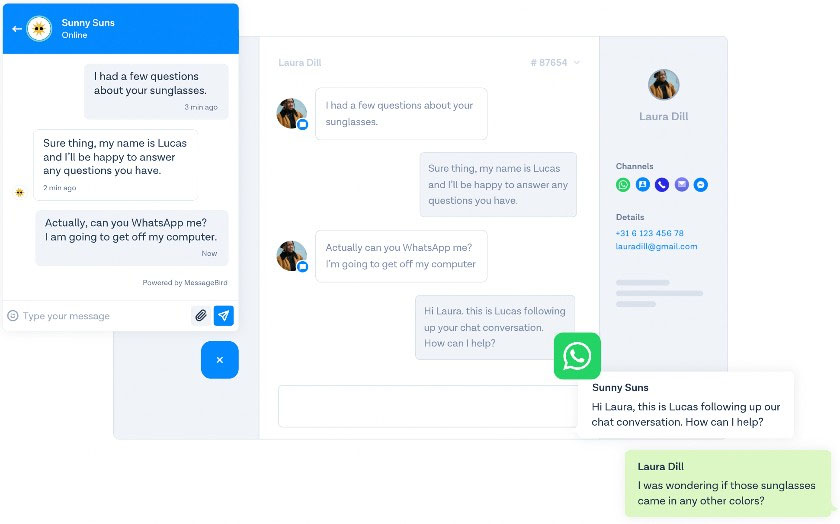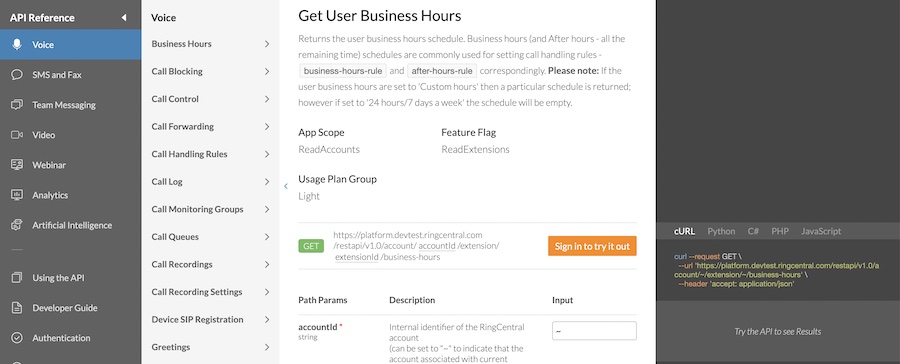Communications platform as a service (CPaaS) has delivered a stream of opportunities in cloud communications and digital customer engagement. Compared to traditional phone communication, CPaaS provides businesses with a more flexible solution for deploying multiple channels. In this article, we’ll look at the most recent CPaaS market trends and discover what makes it one of the fastest-growing technology sectors.
CPaaS Market Trends
The rising demand for real-time communications and customized services is fueling the growth of the CPaaS market. These CPaaS market trends demonstrate how this industry is projected to create new opportunities for providers and consumers.
1. The CPaaS market continues to grow at 40% annually
(Source: Syniverse)
The CPaaS market continues to demonstrate rapid growth, owing to the rising demand for cloud communications. Aside from the increasing number of smartphone users, people are looking to communicate with businesses through multiple channels and messaging applications. In turn, companies see the value of using application programming interfaces (APIs) to integrate communication channels into their existing applications.
2. 67.2% of CPaaS users found a 28.5% revenue increase
(Source: Metrigy)
In this increasingly digital age, companies turn to CPaaS technology to open up other ways to make customer interactions more seamless. A CPaaS solution lets you add new channels at affordable costs and utilize automation tools to promote self-service. Businesses are able to communicate with customers about appointments, discounts, products, and reminders to reorder.
3. CPaaS solutions represent about 15% of the total customer engagement market value
(Source: Future Market Insights)
CPaaS has benefited from the surge in digital customer engagement. Companies are looking for real-time communications solutions that are scalable and easy to create, giving them the ability to enhance the mobile customer experience. With APIs, in-house developers have more control over the entire user experience (UX) as they are able to customize specific communication features.
4. Twilio ranks as one of the top market players in the CPaaS sphere
(Source: Polaris Market Research)
Twilio has long been the major revenue driver for CPaaS and has shaped much of its landscape. It has completed a series of acquisitions since 2015 to strategically expand in the CPaaS market. One prominent example is the acquisition of a customer data platform, Segment, which is ultimately aimed to extend its CPaaS offerings with a focus on the customer engagement technology market.
Twilio is a market-leading CPaaS solution that allows users to integrate voice, video, and chat into existing business apps. It works on a pay-as-you-go pricing scheme to provide businesses flexibility and control of costs. It also offers separate services for marketing campaigns, email programs, and customer engagement. Read our Twilio review for more about its pricing and features.

Twilio’s programmable voice comes with built-in call transcription. (Source: Twilio)
CPaaS Adoption & Usage
With the increasing demand for digitization and customer engagement, more companies are adopting CPaaS to build better cross-channel customer experiences. Read the latest CPaaS news below to understand why its adoption rates are steadily increasing.
5. 46.2% of companies prefer to pay for the use of APIs
(Source: Metrigy)
More businesses are realizing the time and money-saving benefits of purchasing APIs from a full-stack CPaaS provider instead of developing their own. One chief reason is that paid API offerings are easier to adopt and have a shorter learning curve. They involve as little coding as possible and include comprehensive documentation and catalog, so they’re easy to implement, allowing businesses to consistently upgrade their channels as needed.
6. SMS remains the top CPaaS application, followed by voice & social messaging
(Source: Metrigy)
While omnichannel capabilities are a major driving force behind the growth of cloud communications, SMS remains the most widely used channel. Conversational customer engagement has taken off for mobile users in the post-pandemic environment. As a result, text messaging has become the go-to method for companies looking to connect with customers easily.
Plivo is ideal for businesses relying heavily on bulk SMS campaigns. It supports multiple languages and various media formats like JPEG and GIF. The multimedia storage feature lets you easily retrieve and reuse inbound and outbound messages. It costs one cent per minute to make a call and 50 cents to send a message.

Plivo’s number lookup helps identify the carrier and country where the phone number is registered. (Source: Plivo)
CPaaS Growth Forecast
The digital-first movement has fueled the growth of CPaaS, and new use cases are expected to drive the industry forward. The following statistics show the major driving forces behind the growth of the CPaaS market and how these CPaaS trends affect modern businesses.
7. By 2025, 95% of global enterprises will utilize API-enabled CPaaS offerings
(Source: Gartner)
The ability to add specific communication channels to an existing service platform is a valuable feature for companies prioritizing tailored and seamless interactions. Being able to do this without changing back-end systems is why adoption rates of CPaaS are steadily increasing. Companies have more flexibility to choose all the communication channels they need with simple API tweaks.
8. Retail will account for up to $10 billion for CPaaS vendors by 2027
(Source: Juniper Research)
The retail industry is now the biggest CPaaS sector as new use cases emerge around ecommerce. Online retailers demand the integration of social media channels into CPaaS platforms for upselling opportunities. These involve delivery tracking, promotional messages, shipping alerts, and abandoned cart reminders. With this, businesses can send targeted messages and incentivize customers to purchase on their preferred channel.
9. 52% of companies plan to use CPaaS to implement conversational customer engagement
(Source: Sinch)
Research from Sinch reported that 80% of firms have or plan to implement conversational customer engagement. More than half of those will do so using a CPaaS platform to ensure efficient and contextual customer experiences. With a CPaaS platform, companies are empowered to communicate with customers on their preferred channels, whether voice, SMS, email, or social media messaging apps.
10. Omnichannel capability has become a key consideration for CPaaS providers in driving acquisition
(Source: Arthur D Little)
Omnichannel CPaaS allows companies to communicate with customers across channels without losing context or restarting the conversation. A prominent example is the series of transactions among CPaaS providers to add email functionalities to their traditional API set. In 2021, MessageBird acquired SparkPost to create an omnichannel solution, while Intuit acquired Mailchimp, an email marketing tool.
MessageBird is a popular Twilio alternative with multichannel capabilities, allowing customers to communicate with your business through various social media platforms. Its unified omnichannel thread displays messages across online chat apps like WhatsApp, Messenger, and Telegram. It comes with a visual editor for creating workflows—no coding required.

(Source: MessageBird)
11. There is a growing demand for low-code, no-code API offerings
(Source: TechTarget)
Low-code and no-code offerings are gaining momentum in the CPaaS market as providers offer APIs that minimize coding requirements for in-house developers. Firms are realizing the benefits of low-code, no-code applications in terms of time, costs, and deployment flexibility. This makes CPaaS more accessible to any company size by eliminating all the complexities involved in app creation.
Emerging CPaaS Trends
Emerging CPaaS trends go beyond SMS capabilities by allowing businesses to integrate more features into their system. From advanced messaging, programmable video, and security applications, CPaaS has enabled additional functionalities to deliver better customer engagement. Here, we explore the recent CPaaS news and the new API capabilities to look forward to.
12. CPaaS providers are leveraging security applications
(Source: TechTarget)
Aside from omnichannel capabilities, CPaaS enables companies to add extra layers of security with one-time passwords (OTPs), two-factor authentication (2FA), and secure mobile security. With robust security features, agents are more empowered to communicate privately with callers and share sensitive information across messaging platforms.
13. Rich communication services (RCS) provide more customizable & interactive experiences for CPaaS users
(Source: TechTarget)
RCS delivers a more customizable and interactive experience for those using CPaaS for text messaging. It is the next generation of SMS, providing a rich and personalized experience similar to online messaging applications. It supports group chat and video calling over a cellular network as well as multimedia content like GIFs and images. RCS is considered a major market driver for CPaaS, garnering around 1.2 billion subscribers in 2022.
14. Programmable video was projected to hit 80% in 2022
(Source: Gartner)
CPaaS providers are going beyond basic messaging capabilities by offering humanized digital interactions through programmable video. Creating an in-app video through APIs promotes an integrated workflow and seamless connectivity for demonstrating product functionality and features to clients through video calling.
15. More CPaaS providers are offering instant messaging apps to promote interactive customer experiences
(Source: Forbes)
Customer-facing communications are another major market driver for CPaaS as providers encompass more messaging apps and go beyond the conversational capabilities of basic SMS. In a report by Gartner, 80% of customer service firms will abandon native mobile apps in favor of instant messaging to meet customer expectations.

The RingCentral API Reference allows developers to interact with APIs in real time without any code. (Source: RingCentral)
RingCentral, the leading business phone system, is also a CPaaS solution. It provides a dedicated platform for developers, which includes access to free communications APIs to add voice, meetings, SMS, and data to your business software. It also uses embedded communications technology to instantly add voice and text functionality to your web apps. Check out our full RingCentral review to learn more about its pricing and unique offerings.
Frequently Asked Questions
What is the difference between UCaaS vs CPaaS?
The difference between these two cloud communications technologies depends on their service delivery. UCaaS centralizes all communication channels in one ready-made platform, while CPaaS offers developer tools to help businesses fully customize their communications infrastructure. Learn more about their similarities and differences in our guide about UCaaS vs CPaaS.
Who are the market leaders in the global CPaaS market?
In a market report by Mordor Intelligence, the major players in the CPaaS industry include Twilio, Vonage, MessageBird, Plivo, and Sinch. If you’re in the market looking for the right CPaaS solution, check out our guide on the best CPaaS providers.
How did the COVID-19 pandemic affect the CPaaS market growth?
The pandemic drove businesses to fully adopt digital communications to replace in-person interactions. In turn, CPaaS providers took the opportunity to scale up their services and support new use cases, specifically in retail, healthcare, and hospitality. From there, CPaaS market trends started shaping the industry as providers introduced new communication capabilities.
Voice-over-internet-protocol (VoIP) is another type of cloud communications technology that enables users to send and receive calls over the internet. Learn more about the history of VoIP and how it became a mainstream communication solution.
Bottom Line
CPaaS provides endless opportunities to enhance customer experiences. The ability to customize communication features opens up your ability to increase the channels you need. In the coming years, the CPaaS market is expected to witness tremendous growth brought about by various factors, such as the rise of cloud-based services and customer-facing communications.
Check out our guide on what is CPaaS to learn more about this powerful cloud technology.